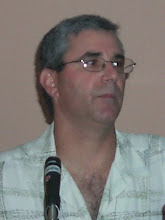Prepared for Dye Garments and Garment Dyeing
What is it about prepared for dye (pfd) garments that is so different from normal white garments you can buy at any store? What are the pitfalls of using white garments for garment dyeing?
PFD garments have many attributes that are not at all obvious to the naked eye. It begins with fabric preparation. Fabrics must be in a condition that they will readily accept a range of dyestuffs, from direct to reactive and pigment. Garment dyeing is done atmospherically, that is, they are dyed at atmospheric pressure. Fibers that do not accept dye without being subjected to pressurized equipment (all synthetics), therefor, cannot be garment dyed. Different cellulosic fibers will have different affinity to particular dyes. I won't get into chemistry, but suffice it to say that rayon or pima cotton will have a vastly different dye uptake (rate of assimilation of the dye) than normal cotton or hemp. Therefor, dyeing garments together that have different fiber composition is risky, and will likely result in garments with completely different shades.
The first step to insuring you have the best possible prepared for dye fabric is to insure the yarns are knit into specific lots, and the lot integrity be maintained through finishing. Trim (ribs) should be knit from the same yarn as the body fabric, and batched with the body fabric into a single dyelot. Care should be taken to not use leftover yarn from a previous purchase. Greige goods (unfinished fabric) should not sit for prolonged periods in storage (over 6 months) as they will begin to degrade in their UV factors which will affect dyeability.
To properly prepare a fabric it must undergo wet processes that do not, in any way, block or resist dye penetration. Most fabrics are bleached, to remove excess natural oils and waxes from yarn spinning, and to provide a uniform base. This leaves us with an eggshell colored base fabric. Some will add optic brightners, to instill a brighter base that will rsult in brighter colors. There is some dispute to using brightners, as they are a catagory of dyestuff and do take up some dyesites. Uneven application of optical brightners will lead to a splotchy, uneven dyeing. However, proper even application will not harm the dyeing potential and will add the ability to hit brighter pastels. Another advantage is that those garments not being subsequently dyed may be used as a nice bright white.
Another area of concern is the application of sewing lubricants and softeners. Some catagories of these finishes (silicones being most notorious) may inhibit dye absorbtion. It is best to use an innocuous finish that aids in lubricity but is not a risk for potential dyeing issues. Softeners can be added after garment dyeing if desired.
To insure a pfd garment fits after garment dyeing, consideration must be given to the shrinkage that will occur in the dyeing and drying process. The prepared fabrics must be tested, and the shrinkage must be added to the base zero shrink pattern to insure conformance to specifications upon delivery.
Once a proper pfd fabric is in hand one must insure the marker making, spreading and cutting is performed properly. This is one area where inattention can lead to disaster. Ideally, you want all the garments components to come from the same ply of fabric. Fabric may vary somewhat yard to yard, but the bigger concern is having a body from one roll and sleeves from a different roll. This could lead to shading (sleeves come out a different color than the body, or the front is different from the back). It is best to use trim that is processed with the body fabric, or the possibility of shading of trim to body may occur.
When sewing pfd garments you must use a dyeable thread. This can be cotton or rayon. A rayon thread will dye up brighter and shinier and provide a contrast. You also must consider the labels to be used. Certain labels will lose their printing in a dye environment and be unreadable. Others may curl or crinkle. Be sure to discuss with your label supplier the fact that the labels must stand up to a garment dye process before you order them.
With over twenty years in the business of providing custom private label prepared for garment dye products Style Source has the experience to insure no issues arise due to fabric or garment preparation. We can manage garment dye programs for you (either pigment dyeing or reactives) and handle the sorting by size and quality control as well as insuring the garments meet specifications after being dyed.

